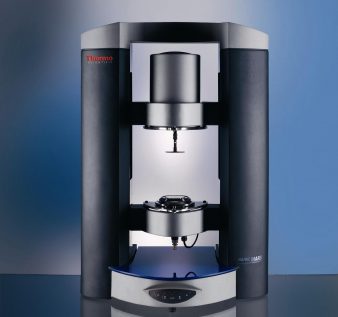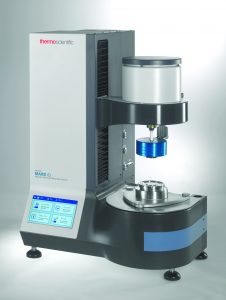Our expert is ready to help
We are happy to tell you more and help you choose the equipment that best matches your needs.
Rheometric measuring
Viscosity is a quality that can be measured through relatively simple testing, and it helps determine various flow qualities. Usually, viscosity is measured by rotating a specifically dimensioned probe in the sample at a standard speed and specific temperature. The force pushing against the rotation and the probe’s outer dimensions can be used to calculate the relative viscosity of the sample.
Measuring viscosity through rotational analysis is the simplest rheological method. Absolute viscosity can be determined by using a rheometer with rotation and standardised probes and vessels. If you want more precise information about a sample’s fine structure, you need a rheometer designed for oscillation. In oscillating measurements, small forces can be directed precisely on the sample, or minor controlled deformations can be introduced to the material’s fine structure. Oscillation provides data on a sample’s properties during storage, transport and end use, for example:
Software
Thermo HAAKE systems are controlled via the clear RheoWin software.
The RheoWin software makes it easy to develop a new rheological measuring method. In the main view, the measuring modules are divided into three logical sections. The general section shows the icons for temperature and gauge length adjustment. The measuring sections shows all measuring methods available to the configuration in use. After measuring, automatic calculations can be carried out n the data. The calculation icons are shown in the evaluation window. For a completely unknown sample, a test series can be run with the help of the Rheowizard feature.

